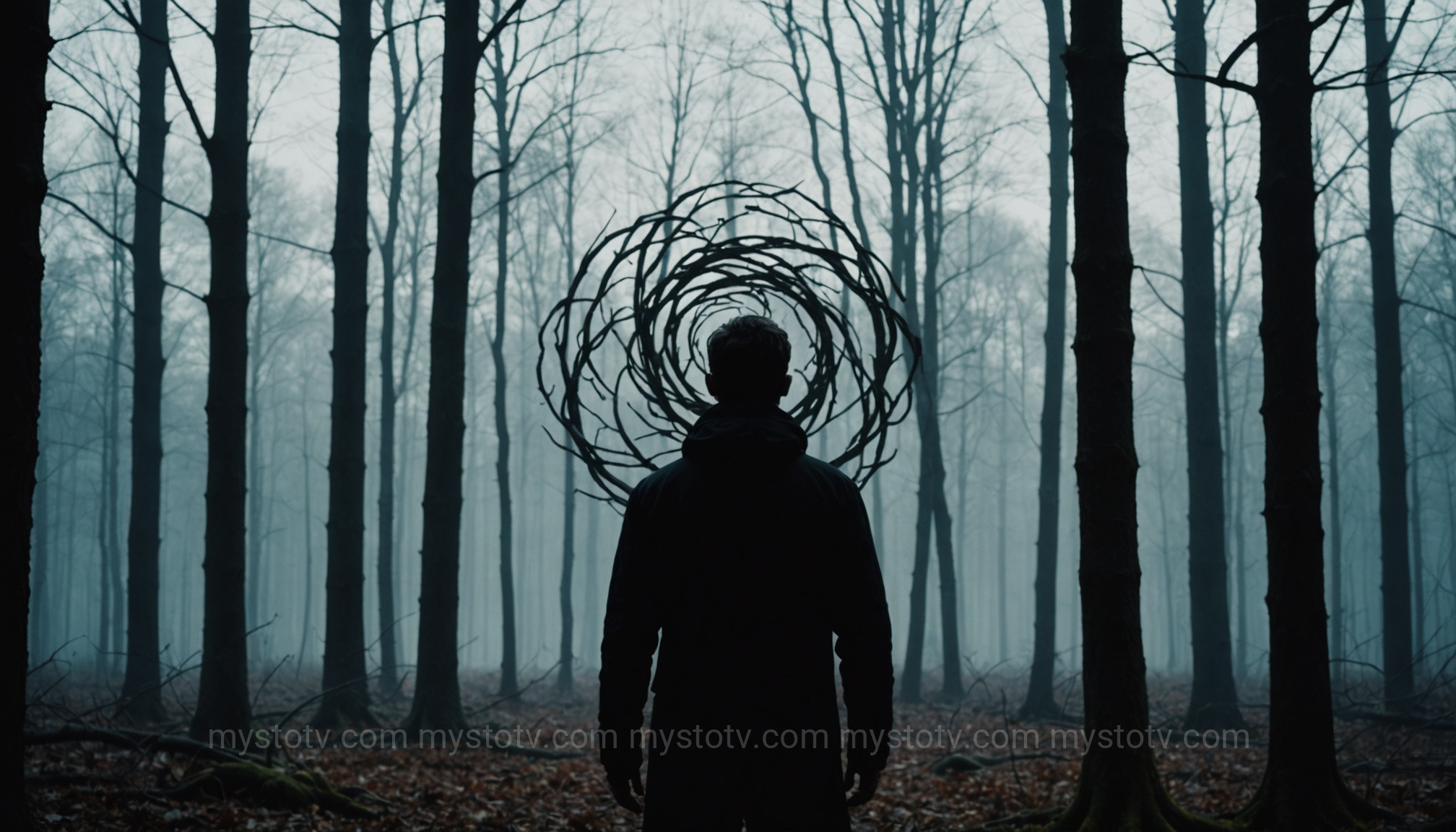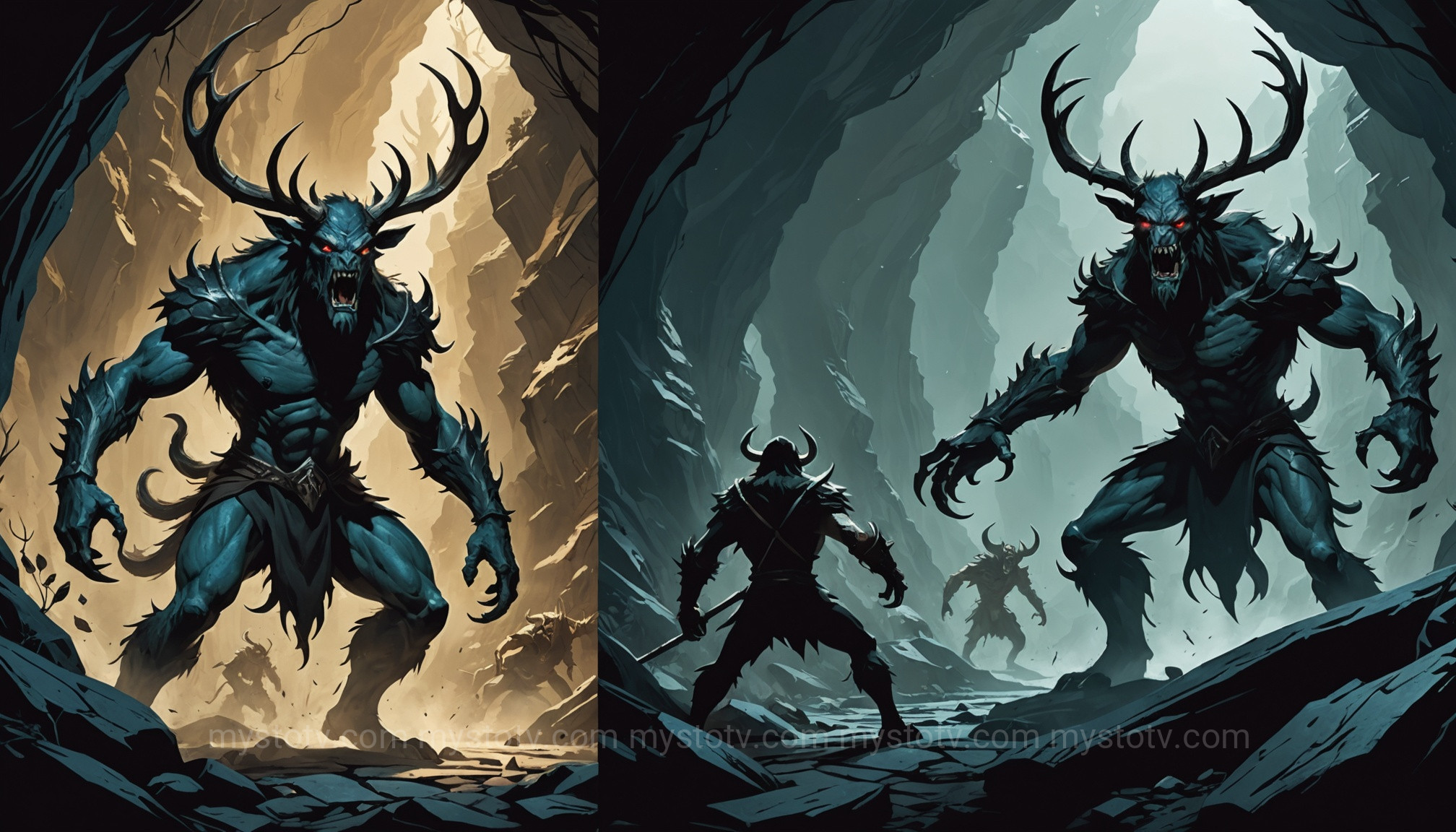I’ll never forget the sound of a snapping twig in the dead of a winter night while camping deep in the woods of northern Minnesota. In the absolute, crushing silence, that small crack sounded like a gunshot. My heart hammered against my ribs, and every shadow cast by my headlamp seemed to twist into something unnatural. It was just a deer, of course, but for a terrifying moment, my mind raced to the campfire stories I’d heard since I was a kid—tales of the deep woods and the things that haunt them. Those stories often centered on one particularly chilling legend. Understanding what is a wendigo myth begins not in a horror movie, but in that primal fear of the cold, the dark, and the desperation of starvation that feels intensely real when you’re miles from civilization.
Contents
- 1 The Origins and Core Beliefs: Understanding What is a Wendigo Myth
- 2 Psychological and Cultural Interpretations: Deconstructing What is a Wendigo Myth
- 3 The Wendigo in Modern Pop Culture: How Contemporary Media Shapes What is a Wendigo Myth
- 4 Frequently Asked Questions about the Wendigo Myth
- 5 References
The Origins and Core Beliefs: Understanding What is a Wendigo Myth
To truly grasp what a wendigo myth is, we must look past the modern monster with deer antlers and delve into the rich and complex oral traditions of the Algonquian-speaking peoples of North America. The legend is most prominent among nations like the Ojibwe, Saulteaux, Cree, and Innu. Far from being a simple campfire story, the Wendigo (also spelled Windigo) is a powerful entity embodying the dangers of winter, famine, and the breakdown of social order. It serves as a profound cautionary tale, deeply woven into the cultural fabric of these communities.

The Algonquian Roots of the Legend
The term "Wendigo" is believed to derive from a Proto-Algonquian word meaning "evil spirit that devours mankind." At its core, the myth is a personification of insatiable hunger and greed. According to tradition, a human can become a Wendigo through several means. The most common path is resorting to cannibalism to survive a harsh winter. This act of desperation is seen as a profound taboo, and the person who commits it is said to become possessed by the malevolent spirit of the Wendigo, forever cursed to crave human flesh. Another path is through extreme greed or by being in contact with a Wendigo, which can pass on its curse.
Physical Descriptions and Terrifying Traits
Unlike many modern depictions, the traditional Wendigo was not a creature with a deer skull for a head. Folkloric descriptions paint a far more disturbing picture. It is often described as a gaunt, skeletal figure, emaciated from its constant hunger. Its skin is said to be the pale gray of death, stretched taut over its bones. Despite its frail appearance, it is impossibly tall—growing in size with each person it consumes, so it can never be full. It is also unnaturally fast and strong, able to withstand the brutal cold of the north woods. Perhaps most frighteningly, it is a cunning hunter, known to mimic human voices, crying like a baby or calling for help to lure unsuspecting victims out into the cold.
The Spirit of Insatiable Greed and Famine
Beyond the physical monster, the Wendigo represents a spiritual and moral corruption. It is the embodiment of excess. The hunger of the Wendigo is not just for flesh but is a metaphor for any form of insatiable desire, whether for food, power, or possessions. In a communal society where survival depended on sharing resources and mutual support, the concept of a creature driven by selfish, all-consuming greed was the ultimate horror. This legend served as a vital tool for reinforcing community values and warning against the destructive nature of individualism at the expense of the group.
Analysis: The original Wendigo legend is a sophisticated cultural construct. It functions as a practical warning against cannibalism during famine, a moral lesson against greed, and a way to explain the unexplainable hardships of life in a harsh environment. Understanding what is a wendigo myth from this perspective reveals it as less of a monster story and more of a complex allegory for human frailty and the importance of community cohesion for survival.
Psychological and Cultural Interpretations: Deconstructing What is a Wendigo Myth
The enduring power of the legend has led scholars, psychologists, and historians to explore the deeper meanings behind it. Deconstructing what is a wendigo myth reveals fascinating insights into human psychology, cultural anxieties, and the historical context in which the stories flourished. It's a lens through which we can understand not just a monster, but the people who feared it.

A Cautionary Tale Against Cannibalism
The most direct interpretation of the Wendigo myth is as a powerful deterrent against survival cannibalism. For communities living on the edge of subsistence in the unforgiving north woods, starvation was a real and constant threat. The legend created a supernatural consequence for an act that, while perhaps necessary for individual survival, would tear the fabric of society apart. By transforming the cannibal into a monstrous, eternally damned creature, the myth reinforced one of the culture's strongest taboos, ensuring that even in the most dire circumstances, the community would strive to hold onto its humanity.
Wendigo Psychosis: A Culture-Bound Syndrome
In the late 19th and early 20th centuries, the concept of "Wendigo Psychosis" emerged among Western observers. This was described as a culture-bound syndrome where individuals would develop an obsessive fear of becoming a Wendigo, coupled with a craving for human flesh. They might become withdrawn, violent, and suffer from delusions. Jesuit missionaries and officials of the Hudson's Bay Company documented cases of individuals who claimed to be possessed and were sometimes ceremonially killed by their own community to prevent them from harming others. While Wendigo Psychosis was once listed in the Diagnostic and Statistical Manual of Mental Disorders (DSM), its existence as a distinct medical condition is now heavily debated. Many scholars argue it was more likely a manifestation of starvation-induced psychosis, combined with the cultural belief system used to rationalize and contain the behavior.
A Symbol of Colonialism and Environmental Destruction
More contemporary analysis, particularly from Indigenous scholars, interprets the Wendigo as a symbol for the consuming greed of European colonialism. In this view, the insatiable hunger of the Wendigo mirrors the colonists' endless appetite for land, resources, and the destruction of Indigenous cultures. Author and activist Jack D. Forbes wrote about the "Wétiko" (a related concept) as a "cannibal sickness" of exploitation that drives societies to consume the earth and other people for profit. This modern interpretation expands the question of what a wendigo myth is, reframing it as a powerful critique of capitalist excess and environmental devastation.
Analysis: The multiple interpretations of the Wendigo myth showcase its incredible adaptability. It has evolved from a specific, localized warning into a broader symbol for various forms of destructive consumption. Whether viewed through a psychological, anthropological, or post-colonial lens, the myth forces us to confront uncomfortable truths about desperation, greed, and the potential for monstrosity that lies within humanity itself.
The Wendigo in Modern Pop Culture: How Contemporary Media Shapes What is a Wendigo Myth
While the traditional legend remains vital, the question of what is a wendigo myth for most people today is answered by movies, video games, and novels. The creature has become a staple of the horror genre, but this popularization has often come at the cost of its original meaning and appearance. The modern Wendigo is a very different beast from its folkloric ancestor.

One of the most significant changes in the Wendigo's modern portrayal is its physical appearance. The addition of a deer or elk skull, prominent antlers, and other animalistic features is a largely modern invention, popularized by works like Larry Fessenden's film Wendigo (2001) and the video game Until Dawn (2015). While visually striking, this look moves away from the more uncanny horror of a gaunt, human-like figure and closer to a generic "monster of the woods" trope. This version often loses the deep symbolism of starvation and human corruption, replacing it with brute force.
Many popular works, such as Stephen King's Pet Sematary, tap into the spirit of the Wendigo as a malevolent, ancient force that corrupts the land and resurrects the dead with a sinister twist. This aligns more with the "evil spirit" aspect of the myth. Other stories, like the film Antlers (2021), attempt to blend the folkloric themes of hunger and community distress with the modern antlered monster design, creating a hybrid that bridges the two worlds.
Analysis: The transformation of the Wendigo in pop culture is a double-edged sword. On one hand, it has introduced the legend to a global audience, ensuring its continued relevance. On the other, it often strips the myth of its specific cultural context and deeper moral warnings. The pop-culture Wendigo is primarily a monster to be fought and defeated, whereas the traditional Wendigo was a curse to be feared and a lesson to be heeded. This shift simplifies the complex question of what is a wendigo myth into a more straightforward horror narrative.
Frequently Asked Questions about the Wendigo Myth
Even with a deeper understanding, the Wendigo myth prompts many specific questions. Here are answers to some of the most common inquiries.
What is the difference between a Wendigo and a Skinwalker?
This is a frequent point of confusion. Both are powerful, malevolent figures from Indigenous North American traditions, but they are distinct. The Wendigo myth originates with Algonquian peoples and is tied to cannibalism, winter, and starvation. The Skinwalker legend comes from Navajo (Diné) culture and involves a type of malevolent witch who has the ability to turn into, possess, or disguise themselves as an animal.
Are Wendigos always evil?
In the context of the myth, yes. The Wendigo is the personification of a destructive and evil force. It is not a misunderstood creature but a symbol of corruption and taboo. Whether it is viewed as a possessing spirit or a human transformed by their own horrific actions, the outcome is a malevolent being driven by an insatiable hunger that threatens all human life.
Is it disrespectful to talk about or portray the Wendigo?
This is a complex and important question. For many Algonquian people, the Wendigo is a serious and dangerous entity, and speaking its name or telling its stories lightly is considered taboo, especially in winter. While the creature has entered public domain, it's crucial for creators and consumers of horror media to approach the topic with respect for its cultural origins. Understanding the difference between the traditional legend and its modern pop culture adaptations is a key part of that respect. Acknowledging its roots as a cautionary tale and cultural symbol, rather than just a generic monster, is essential.
References
- Brightman, Robert A. (1988). "The Windigo in the Material World". Ethnohistory. 35 (4): 337–379.
- Marano, Lou (1982). "Windigo Psychosis: The Anatomy of an Emic-Etic Confusion". Current Anthropology. 23 (4): 385–412.
- Goddard, Ives. (1969). "The Suffix '-igo' in Algonquian". In Contributions to Anthropology: Linguistics I (Algonquian), edited by A.D. DeBlois, 101–10. National Museum of Canada Bulletin 214.
In conclusion, the answer to what is a wendigo myth is layered and profound. It is simultaneously a chilling monster story, a crucial cultural warning against greed and cannibalism, a psychological case study, and a potent metaphor for modern societal ills. From the snowy forests of North America to the screens of a global audience, the Wendigo has transformed, yet its core essence—the terror of an insatiable hunger that consumes everything in its path—remains as horrifying and relevant as ever. It reminds us that the greatest monsters are often born from human desperation and a loss of humanity.